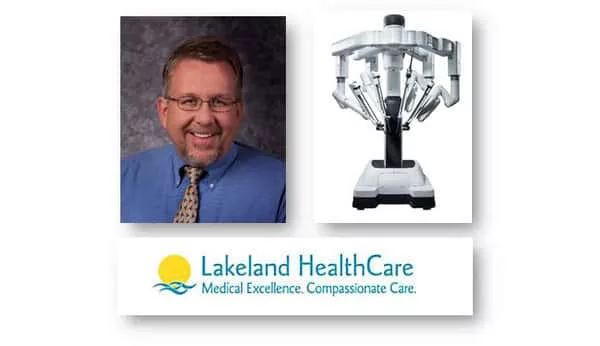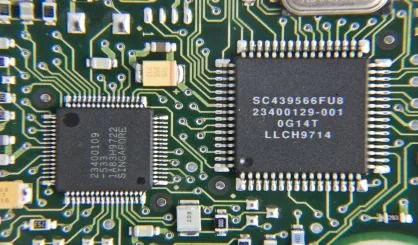A few short years ago, robotic surgery was something straight out of a science fiction novel. Today, it is not only science fact, it is an amazing paradigm shift that is saving lives, and Lakeland Health is a trailblazer in that arena once again. We've received word today that Lakeland Health recently became the first free-standing ambulatory surgery center in the tri-state area of Michigan, Indiana and Illinois, and one of only seven in the world, to perform robotic surgery using the da Vinci Xi surgical system.
The first of four Xi surgeries performed to date at the Center for Outpatient Services in St. Joseph was an abdominal and groin hernia repair by certified robotic surgeon, Dr. Roy Winslow.
Dr. Lowell Hamel is Vice President of Medical Affairs & Chief Medical Officer for Lakeland Health. He says, "Lakeland Health is proud to be leading the way in minimally invasive robotic surgery, not only in Southwest Michigan, but throughout the world." He adds, In 2005, we made the decision to enhance surgery with the use of robotics, and for the past decade, gentle healthcare has been an important aspect our our journey to design perfect patient care."
In April of 2016, the Lakeland Health Board of Directors approved the purchase of a third da Vinci Xi surgical robot, making Lakeland the only health system in Michiana with the most advanced Xi technology. The new robot replaced the Si system at the Center for Outpatient Services in an effort to further enhance the outpatient surgery experience. Robotic surgical systems are also located at Lakeland Medical Center, St. Joseph and Lakeland Hospital, Niles. To date, a total of 15 certified robotic surgeons have performed 1,829 da Vinci surgeries.
Lakeland Health surgeons use the da Vinci surgical system to see inside the body more clearly and perform complex surgeries through tiny incisions. Compared to conventional surgery, da Vinci robotic-assisted surgery may include a number of benefits for patients including faster recovery, less pain, shorter hospital stays, and smaller incisions, among others.






